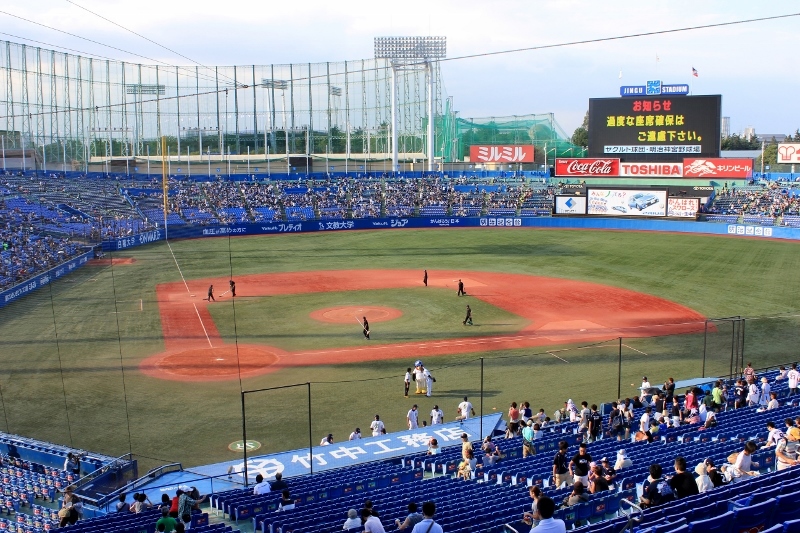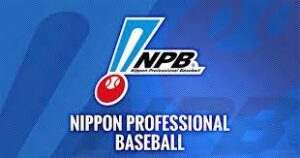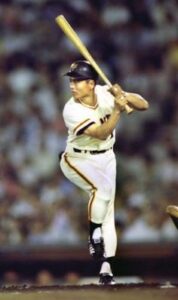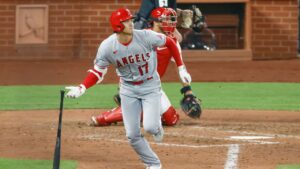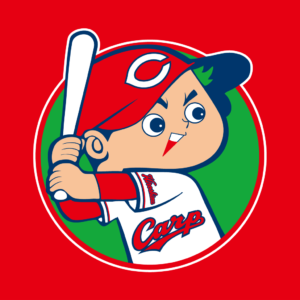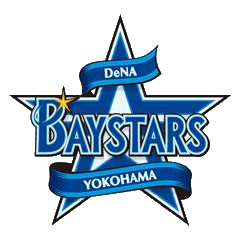Baseball has a rich history in Japan and enjoys immense popularity among sports enthusiasts. The sport was first introduced to the country in the late 19th century and has since flourished, becoming deeply ingrained in Japanese culture. There have been many Japanese Baseball Leagues. Today, Nippon Professional Baseball (NPB) serves as the primary professional baseball league in Japan, featuring 12 top-tier teams divided into the Central League and the Pacific League.
The Central League consists of the Chūnichi Dragons, Hanshin Tigers, Hiroshima Tōyō Carp, Yomiuri (Tokyo) Giants, Yakult Swallows, and Yokohama Baystars. Meanwhile, the Pacific League includes the Chiba Lotte Marines, Fukuoka Softbank Hawks, Hokkaido Nippon Ham Fighters, Orix Buffaloes, Seibu Lions, and Tohoku Rakuten Golden Eagles. These leagues showcase highly competitive play, and their matches attract legions of passionate fans who are devoted to their favorite teams.
In addition to the first-tier NPB, Japan also hosts two secondary-level professional minor leagues known as the Eastern League and the Western League. These leagues offer shorter schedules aimed at nurturing and developing players, helping to maintain the high level of skill and performance on the field in Japanese professional baseball.
Contents
History of Japanese Baseball
Origin and Early Years
Baseball, known as yakyū in Japan, was introduced to the country in 1872 when Horace Wilson, a professor at Kaisei Gakko (now Tokyo University), taught the game to his students. By the end of the century, baseball had become a national sport, and the first professional competitions emerged in the 1920s.
Matsutarō Shōriki, a media mogul, played a significant role in popularizing professional baseball in Japan. By inviting legendary American baseball players like Babe Ruth, Jimmie Foxx, Lou Gehrig, and Charlie Gehringer to Japan for exhibition games in 1934, Shōriki was able to increase the sport’s popularity and ultimately lay the foundation for the formation of professional leagues.
Post-World War II and League Formation
After World War II, Japanese Professional Baseball resumed play in 1946. Eight teams competed in a single league from 1946 to 1948. In 1949, the San Francisco Seals, managed by Lefty O’Doul, toured Japan and played seven games against the Japanese pros.
Eventually, Japanese baseball was divided into two leagues: the Central League and the Pacific League, each with six teams. These leagues comprise Nippon Professional Baseball (NPB) the highest level of baseball in Japan.
Influence of American Baseball Players
The success and popularity of Japanese baseball have been significantly influenced by American baseball players who have played in Japan. Many notable American players have participated in Japanese leagues, imparting their skills and knowledge to Japanese teams.
Furthermore, the first Japanese-born Major Leaguer, Masanori Murakami, played for the San Francisco Giants in 1964, paving the way for future Japanese players to join Major League Baseball, such as Hideo Nomo, Ichiro Suzuki, and Shohei Ohtani.
International Competitions
Japan has made its presence felt in international baseball competitions. The Japanese national team has won multiple gold medals at the Asian Games and has been a strong contender in the World Baseball Classic, winning the championship in 2006 and 2009. This success in international competitions is a testament to the continuous development and popularity of baseball in Japan.
Nippon Professional Baseball (NPB)
Central League and Pacific League
Nippon Professional Baseball (NPB) has been the highest level of baseball in Japan since 1950. The league is comprised of two circuits: the Central League and the Pacific League, each containing six teams. Below these leagues are two secondary-level professional minor leagues, the Eastern League and the Western League, which develop players through shorter schedules.
Regular Season
The NPB regular season traditionally begins in late March or early April and concludes in early October. It consists of 143 Regular Season Games for each team. The season is designed with efficiency in mind, as tie ballgames end after 12 innings.
Interleague Games
Interleague games occur when teams from the Central League and Pacific League compete against each other. This was introduced in 2005 and has since provided fans with opportunities to witness exciting matchups between the two leagues.
All-Star Games
The NPB All-Star Games serve as a mid-season spectacle bringing together top players from the Central and Pacific leagues. Fans vote to select participants, allowing them to enjoy a thrilling exhibition of skill and talent from their favorite players.
Post-Season and Championship Series
At the end of the regular season, the top teams from each league advance to a playoff system called the Climax Series. The Climax Series determines which team from each league will compete in the championship – the Japan Series.
The Japan Series is a best-of-seven showdown between the Central League and Pacific League champions to determine the ultimate winner of the NPB season. The Japan Series is a highly anticipated event that captures the attention of fans across the country, showcasing the pinnacle of Japanese baseball.
Throughout the season, fans keep track of schedules, results, and standings to stay informed and support their favorite teams in their pursuit of success.
Notable Japanese Baseball Players
Historic Figures
One of the most iconic Japanese baseball players in history is Sadaharu, Oh who was born on May 20, 1940. A former baseball player and manager, Oh currently serves as the chairman of the Fukuoka SoftBank Hawks of Nippon Professional Baseball. He is known for his incredible hitting ability and holds the world record for the most career home runs, a record that still remains unbroken.
Another influential figure in Japanese baseball history is Ichiro Suzuki Often referred to simply as “Ichiro,” he played in both Major League Baseball (MLB) and Nippon Professional Baseball (NPB). With a batting style that was unique and captivating, he became a fan favorite and one of the greatest hitters in the world. Ichiro was also the first Japanese position player to play in MLB, paving the way for other talented players from Japan.
Current Stars
In recent years, the Japanese baseball scene has continued to produce exceptional talent, most notably Shohei Ohtani. Ohtani, a two-way player who excels at both hitting and pitching, made his MLB debut in 2018 and has been making waves ever since. He has achieved multiple recognitions, such as:
- 2× All-Star (2021, 2022)
- AL MVP (2021)
- 2x All-MLB First Team (2021, 2022)
- 2x All-MLB Second Team (2021, 2022)
Another prominent player is Hideki Matsui nicknamed “Godzilla” for his powerful presence on the field. Matsui played in both NPB and MLB, notably for the New York Yankees, where he became a World Series champion in 2009. As one of the best Japanese MLB players of all time, he made a significant impact on the sport and continues to be an important figure in the baseball world.
In conclusion, the realm of Japanese baseball has produced numerous exceptional players who have left their mark on the sport, both historically and in today’s game. With their exceptional talent and dedication, these individuals exemplify the passion and skill that is characteristic of Japanese baseball.
Japanese Stadiums and Teams
Hiroshima Carp and Yokohama Stadium
The Hiroshima Tōyō Carp is one of the prominent teams in the Japanese Central League. Their home ground is the Mazda Zoom-Zoom Stadium Hiroshima, located in Minami-ku, Hiroshima. The Carp have had quite a strong presence in their league, with several championships and successful seasons under their belt.
Yokohama Stadium is another noteworthy baseball venue in Japan. It is the home ground for the Yokohama DeNA BayStars, who play in the Central League as well. Yokohama Stadium has a seating capacity of 34,046 and is known for its unique features such as an artificial turf field and a retractable roof. Both the Hiroshima Carp and Yokohama DeNA BayStars are well-established teams, contributing to the rich history of Japanese baseball.
DeNA BayStars and Other Popular Teams
The DeNA BayStars are a popular team in Japan, attracting fans from the Yokohama area and beyond. They have experienced success throughout their history, including several league championships. Apart from the DeNA BayStars, there are multiple teams in Japan’s Nippon Professional Baseball organization that draw large crowds and have a significant fan base.
Some of these popular teams include:
- Tokyo Yomiuri Giants: Japan’s most famous baseball club, often compared to the New York Yankees in terms of popularity and success.
- Hanshin Tigers: Another storied franchise, with a longstanding and intense rivalry with the Tokyo Yomiuri Giants.
- Fukuoka SoftBank Hawks: A strong team in the Pacific League, known for their exceptional performance in recent years.
It is worth noting that Japanese baseball has connections with Major League Baseball (MLB) in the United States. For instance, the Greater Japan Tokyo Baseball Club, which later became the Tokyo Yomiuri Giants, was initially inspired by the American team, the Los Angeles Dodgers. This relationship between Japanese and American baseball is one of mutual respect and admiration, with many players moving between the two leagues, contributing to the growth and popularity of the sport globally.
Affiliated Minor Leagues
Japan has a farm system of affiliated minor leagues that complement the Nippon Professional Baseball (NPB). These leagues are split into two: the Eastern League and the Western League.
Eastern League
The Eastern League consists of seven teams and serves as the minor league system for the Central League of Nippon Professional Baseball. It was formed in 1954 when the six NPB Central League teams created their own minor league system, known as the Shin Nippon League or “New Japan League.” This was meant to complement the Kansai Farm League, which had been established in 1952. The league has since grown to include one additional team.
Some Eastern League teams include:
- Yomiuri Giants farm team
- Chunichi Dragons farm team
- Yokohama DeNA BayStars farm team
- Hanshin Tigers farm team
Western League
The Western League is owned by the Pacific League, with five teams serving as the minor league system for the NPB Pacific League. This league is designed to help develop players and provide a stepping stone for those looking to advance to professional baseball.
The Western League teams include:
- Fukuoka SoftBank Hawks farm team
- Orix Buffaloes farm team
- Chiba Lotte Marines farm team
- Hokkaido Nippon-Ham Fighters farm team
- Saitama Seibu Lions farm team
Both affiliated minor leagues, the Eastern League and Western League, promote a high level of play and competitiveness while providing an opportunity for young players to hone their skills and advance in the Japanese baseball ranks. Throughout the season, players from these minor league teams may be called up to their respective Nippon Professional Baseball teams, offering them the chance to showcase their talents on a larger stage.
Media Coverage and Broadcasting
Japanese Media Coverage
Japanese baseball, specifically the Nippon Professional Baseball (NPB) is widely covered by local media outlets. The NPB consists of two leagues, the Central League and the Pacific League, which have been shaping the landscape of the sport in Japan since the 1950s. The success of Japanese players in both domestic and international leagues has contributed to the extensive media coverage in their home country.
Television networks like NHK regularly broadcast NPB games, often showcasing special highlights of the Japanese players. Local news and sports websites, such as JapanBall, provide real-time updates, analysis, and commentary on the baseball games.
International Coverage
As Japanese players continue to make an impact in the American Major Leagues, international interest in Japanese baseball has grown. Consequently, international media coverage of the NPB has expanded, with some games becoming available for streaming outside of Japan.
For example, the Pacific League has a partnership with the “For the Fans” sports channel, which broadcasts over 200 NPB Games between August and November. This coverage is accessible on various digital channels, including Pluto, Xumo, Samsung Smart TV, ROKU, and Zingo TV.
Websites like Baseball-Reference offer comprehensive information on Japanese baseball statistics, as well as player profiles and historical data. This rich online resource allows international fans to follow the progress of their favorite Japanese players and teams, keeping up-to-date with their achievements and major events in the sport.

